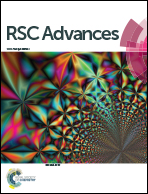Fabrication of poly(methyl methacrylate)/silica KIT-6 nanocomposites via in situ polymerization approach and their application for removal of Cu2+ from aqueous solution
Abstract
In this study, three types of novel mesoporous silica nanocomposites (called MSNCs) based on poly(methyl methacrylate) and modified mesoporous silica KIT-6 were prepared. The chemical, structural and textural properties of MSNCs were characterized by several methods including FT-IR spectroscopy, field-emission scanning electron microscopy (FE-SEM), transmission electron microscopy (TEM), X-ray diffraction (XRD) and thermogravimetric analysis (TGA). Experimental results showed that MSNCs have many active sites on their surface and this feature has a promising future for targeting applications like adsorption. Accordingly, its application for adsorption of Cu(II) from aqueous solution was examined. The adsorption behavior of Cu(II) onto pure KIT-6, modified KIT-6 (called m-KIT-6) and three types of MSNCs was investigated by kinetic and isotherm studies. It was observed that the adsorption equilibrium is short (15 and 30 min for m-KIT-6 and pure KIT-6, respectively and 60–90 min for MSNCs). Adsorption kinetics was fitted by a pseudo second order kinetic equation. Also, the maximum adsorptive capacities of the three types of MSNCs were 79.14%, 91.20% and 81.72%, respectively. And finally, the resulting adsorption isotherms of the MSNCs as well as of pure KIT-6 and m-KIT-6 were found to best fit the Langmuir isotherm model.


 Please wait while we load your content...
Please wait while we load your content...